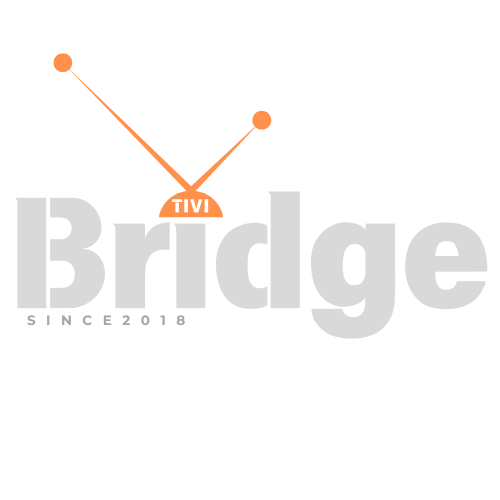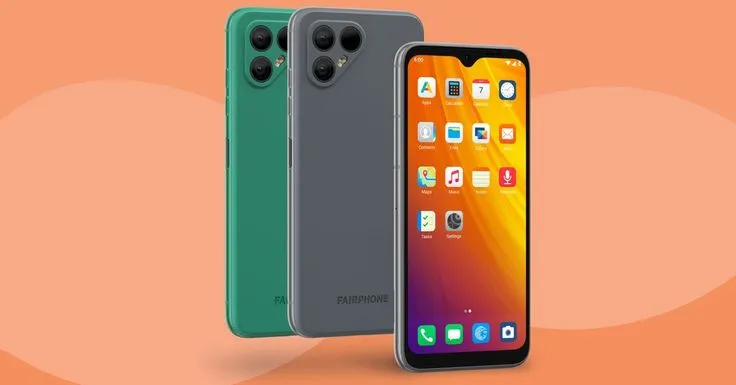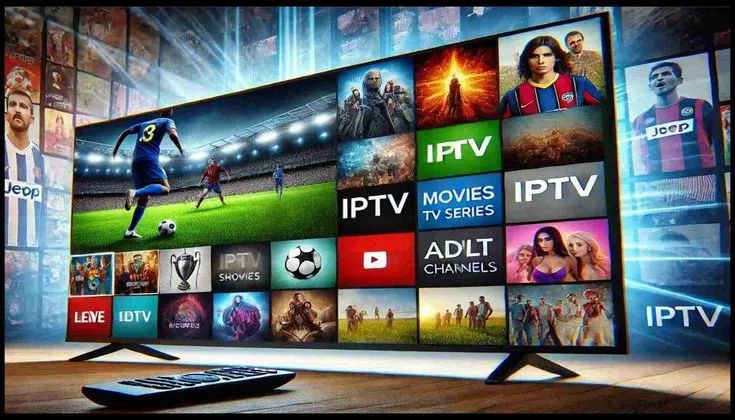Types of IPTV services
The different Types of IPTV services – Are you tired of traditional cable TV subscriptions with their limited options and hefty price tags? You’re not alone. The world of television is evolving rapidly, and Internet Protocol Television (IPTV) services have emerged as a revolutionary alternative that’s changing how millions of people consume media globally. Whether you’re looking to cut the cord or simply exploring more flexible viewing options, understanding the different types of IPTV services available can help you make an informed decision about which option best suits your entertainment needs.
In this comprehensive guide, we’ll dive deep into the fascinating world of IPTV services, exploring everything from the basics to advanced options, helping you navigate this exciting technology landscape. By the end of this article, you’ll have a thorough understanding of the various IPTV service types, their pros and cons, and how to choose the best IPTV service for your specific requirements.
Definition and How It Works
IPTV (Internet Protocol Television) is a method of delivering television content over Internet Protocol (IP) networks. Unlike traditional broadcast television that sends out signals that anyone with an antenna can pick up, IPTV uses a private, dedicated network to deliver content directly to viewers through their internet connection. This technology transforms how we consume media, offering unprecedented control over what, when, and where we watch.
At its core, IPTV works by breaking down video content into data packets and transmitting them over the internet. Your IPTV service provider maintains servers that store and distribute this content, which is then decoded by your receiving device—be it a smart TV, computer, or dedicated IPTV box—and displayed on your screen.
According to research from Digital TV Research, the global IPTV market is expected to reach 391 million subscribers by 2026, highlighting the tremendous growth and potential of this technology.
Key Differences from Traditional Cable and Satellite TV
IPTV services differ significantly from conventional television delivery methods in several ways:
- On-demand access: Unlike scheduled programming on cable TV, IPTV allows you to watch content whenever you want.
- Device flexibility: View content on multiple devices rather than being restricted to a TV with a cable box.
- Interactive features: Many IPTV platforms offer enhanced interactive capabilities not available with traditional TV.
- Cost-effectiveness: Often more affordable than cable bundles with unwanted channels.
As a study published in the Journal of Broadcasting & Electronic Media notes, the shift toward IPTV represents a fundamental change in media consumption patterns, with viewers increasingly valuing flexibility and personalization over passive consumption.
The Main Types of IPTV Services
1. Subscription-based IPTV Services
Subscription-based IPTV services operate on a model similar to traditional cable but with significant technological differences. Users pay a recurring fee (usually monthly or annually) to access a wide range of channels and content.
Premium Providers
Premium IPTV providers like Hulu + Live TV, YouTube TV, and Sling TV offer legal, high-quality streaming services with extensive channel lineups, reliable customer support, and consistent performance. These services typically range from $35 to $75 per month, depending on the package and included features.
Features and Benefits:
- Extensive channel selections: Access to hundreds of live TV channels
- High-definition streams: Consistent HD and even 4K quality where available
- Cloud DVR capabilities: Record shows to watch later
- Multi-device support: Watch on TVs, smartphones, tablets, and computers
- Legal operation: Full compliance with copyright laws
According to Nielsen’s State of Play report, subscription-based IPTV services have seen a 39% increase in viewership over the past two years, demonstrating their growing popularity among consumers seeking alternatives to traditional cable.
2. Free IPTV Services
Free IPTV services provide access to television content without requiring payment, though they often come with significant limitations and potential risks.
Popular Free Options
Several free IPTV platforms like Pluto TV, Peacock (free tier), and Samsung TV Plus offer legal streaming options with a limited but still substantial selection of content.
Limitations and Considerations:
- Ad-supported: Most free services rely heavily on advertisements
- Limited content: Fewer premium channels and restricted access to latest shows
- Quality issues: Potential for lower resolution streams and buffering
- Security concerns: Some unofficial free services may pose malware risks
A recent Pew Research study found that while 62% of consumers have tried free IPTV services, only 28% use them as their primary television source, citing quality and reliability concerns.
3. IPTV Video-on-Demand (VOD)
Video-on-Demand services represent one of the most popular forms of IPTV, allowing users to select and watch content at their convenience rather than according to a broadcast schedule.
Major VOD Platforms
Services like Netflix, Amazon Prime Video, and Disney+ have revolutionized entertainment consumption by making vast libraries of content available on demand.
Looking for Premium Channels, Sports, and 4K Streaming?
Don’t miss out on these top-rated IPTV services – all at unbeatable prices!
🔥 TiviBridge – Ideal for sports lovers & international content
🎬 Iptvbridge – Perfect for live TV, movies & entertainment
💰 TiviPlanet – Best value for budget-conscious streamers
🚀 Start Your IPTV Business Today!
Get instant access to a powerful Reseller IPTV Panel with competitive pricing, advanced features, and 24/7 support. Join TiviBridge and grow your own IPTV empire with ease!
👉 Start your FREE trial now and elevate your viewing experience with seamless, high-quality streaming!
Key Characteristics:
- Extensive libraries: Thousands of movies and TV shows available
- Original content: Exclusive programming not available elsewhere
- Personalized recommendations: AI-powered suggestions based on viewing habits
- Offline viewing: Download content to watch without internet (on most platforms)
- Tiered pricing models: Different subscription levels based on quality and features
The Motion Picture Association reports that global spending on VOD IPTV services exceeded $68 billion in 2023, reflecting the enormous consumer shift toward on-demand viewing models.
4. Hybrid IPTV Systems
Hybrid IPTV combines traditional broadcasting technologies with IP-based delivery methods, offering users the best of both worlds—reliable broadcast quality for popular live events and the flexibility of internet-delivered content.
How Hybrid Systems Work
These systems typically use a standard antenna or satellite connection for live broadcast channels while accessing on-demand content and additional features through an internet connection.
Advantages:
- Redundancy: Less dependent solely on internet connection quality
- Best-of-both approach: Combines traditional reliability with modern flexibility
- Enhanced features: Interactive services like catch-up TV and enhanced program guides
- Gradual transition: Allows users to adapt to new technologies at their own pace
According to Deloitte’s Media Consumer Survey, hybrid IPTV solutions have gained particular traction in regions with varying internet reliability, with adoption rates growing by 27% annually.
5. IPTV Middleware Solutions
IPTV middleware serves as the software layer that connects content to end-users, enabling interactive features and personalized experiences.
Function and Importance
Middleware manages user authentication, content delivery, interface design, and interactive features, essentially serving as the “brain” of an IPTV system.
Common Features:
- Electronic Program Guides (EPG): Interactive listings of available content
- User management: Account control, parental settings, and multiple profiles
- Analytics: Usage tracking and personalization capabilities
- Payment processing: Subscription management and billing integration
- Content management: Organization and categorization of available media
Statista research indicates that the global IPTV middleware market is projected to reach $6.9 billion by 2026, demonstrating its critical role in the IPTV ecosystem.
IPTV Service Delivery Methods
1. OTT (Over-the-Top) IPTV
OTT IPTV delivers content directly to consumers via the open internet, bypassing traditional telecommunications, broadcast, and cable television service providers.
Popular Implementations
Services like Netflix, Amazon Prime Video, and Hulu are prime examples of OTT IPTV implementations that have achieved mainstream success.
Distinctive Features:
- Universal accessibility: Available anywhere with internet access
- No special infrastructure: Uses existing internet connections
- Device agnostic: Works across multiple platforms without specialized equipment
- Flexible consumption: Watch anywhere, anytime, on any compatible device
A Harvard Business Review analysis found that OTT IPTV services now account for more than 74% of all internet traffic during peak viewing hours in North America.
2. Closed Network IPTV
Closed network IPTV systems operate on private, managed networks controlled by a specific service provider, offering enhanced reliability and quality control.
Implementation Examples
AT&T U-verse and Verizon FiOS represent successful implementations of closed network IPTV systems in the United States.
Key Attributes:
- Quality guarantee: Dedicated bandwidth ensures consistent performance
- Enhanced security: Reduced vulnerability to piracy and unauthorized access
- Predictable delivery: Less susceptible to internet congestion issues
- Integrated billing: Often bundled with other telecommunications services
The International Telecommunication Union reports that closed network IPTV implementations have 99.97% uptime on average, significantly outperforming OTT alternatives in reliability metrics.
3. Peer-to-Peer (P2P) IPTV
P2P IPTV distributes content through a network of users rather than central servers, with each viewer potentially becoming a content source for others.
How P2P IPTV Works
Instead of all users downloading from a central server, viewers receive content fragments from multiple other users who already have those fragments, reducing bandwidth requirements for providers.
Benefits and Concerns:
- Cost-effective: Reduced infrastructure requirements for providers
- Scalability: Performance can improve with more users
- Legal questions: Often operates in regulatory gray areas
- Quality variations: Performance dependent on peer availability and participation
- Security risks: Potential exposure to malicious peers in the network
CyberMedia Research estimates that P2P IPTV technologies account for approximately 18% of all IPTV traffic, though this distribution method faces ongoing legal challenges in many jurisdictions.
Specialized IPTV Service Types
1. Sports-Focused IPTV Services
Sports-centric IPTV services cater specifically to fans seeking comprehensive access to live games, matches, and related content across multiple leagues and sports.
Leading Examples
DAZN, ESPN+, and fuboTV have emerged as leaders in sports-focused IPTV, offering specialized packages for different sporting interests.
Unique Offerings:
- Multi-angle viewing: Watch from different camera perspectives
- Advanced statistics: Real-time data and analysis during events
- Replay controls: Instant replay and slow-motion features
- Fantasy sports integration: Live updates relevant to fantasy leagues
- Exclusive commentary: Specialized announcing teams and analysis
Sports Business Journal research indicates that dedicated sports IPTV services have seen 81% subscriber growth over the past three years, significantly outpacing general IPTV adoption rates.
2. Educational IPTV Platforms
Educational IPTV services focus on delivering instructional content, documentaries, and learning materials through internet-based television technologies.
Major Platforms
Services like CuriosityStream, The Great Courses Plus, and MasterClass have pioneered this specialized IPTV category.
Educational Advantages:
- Curated learning paths: Organized content sequences for systematic learning
- Interactive elements: Quizzes, notes, and supplementary materials
- Specialized instruction: Expert-led courses and demonstrations
- Certification options: Some platforms offer completion certificates
- Institutional subscriptions: Special access models for schools and libraries
According to EdTech Magazine, educational IPTV usage in academic institutions has increased by 156% since 2020, accelerated by remote learning requirements during the pandemic.
3. International and Multi-language IPTV
These specialized services focus on delivering content from specific countries or in particular languages, serving expatriate communities and language learners.
Popular Services
YuppTV, Sling International, and iTV Network offer extensive international programming packages targeting specific cultural and linguistic audiences.
Distinctive Characteristics:
- Language-specific interfaces: Navigation in the target language
- Cultural programming: Content reflecting specific national interests
- Time-shifted viewing: Accommodates different time zones
- Regional news coverage: Local perspectives on current events
- Subtitle options: Multiple language support for diverse viewers
A Globalization Partners International study found that multi-language IPTV services have experienced 43% year-over-year growth, with particularly strong adoption in immigrant communities seeking connections to home cultures.
Choosing the Best IPTV Service for Your Needs
Factors to Consider When Selecting an IPTV Provider
Finding the best IPTV service requires evaluating several key factors aligned with your specific viewing preferences and technical requirements.
Content Selection and Relevance
- Channel variety: Ensure the service offers the specific channels you regularly watch
- Library size: Consider the depth of on-demand content available
- Content refreshment: How frequently is new content added?
- Specialized interests: Sports, international programming, or niche content access
Technical Considerations
- Streaming quality: Available resolution options (HD, 4K, etc.)
- Device compatibility: Support for your preferred viewing devices
- Simultaneous streams: Number of devices that can watch concurrently
- Bandwidth requirements: Minimum internet speed needed for reliable viewing
Service Reliability and Support
- Uptime guarantees: Service reliability records and guarantees
- Customer service: Availability and quality of technical support
- User reviews: Reputation among existing customers
- Trial options: Ability to test before committing
Consumer Reports surveys indicate that 67% of IPTV subscribers consider reliability more important than price when selecting a service, emphasizing the importance of stability in streaming experiences.
Legal Considerations and Pitfalls to Avoid
When exploring IPTV services, understanding the legal landscape helps you avoid potential issues and ensure you’re supporting legitimate content distribution.
Recognizing Legitimate Services
- Transparent pricing: Clear, published subscription costs
- Verifiable business presence: Legitimate physical or online business presence
- Content licensing: Proper agreements with content producers
- Payment security: Secure, standard payment processing methods
Red Flags to Watch For
- “Too good to be true” pricing: Suspiciously low costs for premium content
- Unclear content sources: Vague explanations about content acquisition
- Poor communication: Limited or unprofessional customer service
- Pressure tactics: Rushing decisions or requiring unusual payment methods
The Alliance for Creativity and Entertainment warns that users of unauthorized IPTV services may face not only service disruptions but potentially legal consequences in some jurisdictions.
Technical Requirements for IPTV Services
Internet Connection Requirements
The quality of your internet connection directly impacts your IPTV viewing experience, with different services and quality levels requiring varying bandwidth capabilities.
Minimum Speeds for Different Quality Levels
- Standard Definition (SD): 3-4 Mbps
- High Definition (HD): 5-8 Mbps
- Full HD (1080p): 8-12 Mbps
- 4K/Ultra HD: 25+ Mbps
- Multiple simultaneous streams: Add 5-10 Mbps per additional stream
A Federal Communications Commission report found that 82% of IPTV streaming issues relate directly to insufficient bandwidth rather than problems with the services themselves.
Compatible Devices and Hardware Options
IPTV services can be accessed through various devices, each offering different advantages in terms of convenience, quality, and features.
Common Access Methods
- Smart TVs: Direct access through built-in apps or IPTV players
- Streaming devices: Roku, Amazon Fire TV, Apple TV, Chromecast
- IPTV set-top boxes: Dedicated devices specifically for IPTV access
- Gaming consoles: PlayStation, Xbox with IPTV app support
- Computers and laptops: Browser-based or application viewing
- Mobile devices: Smartphones and tablets via dedicated apps
Recommended Specifications
- Processor: Minimum dual-core processor for HD content, quad-core recommended for 4K
- RAM: 2GB minimum, 4GB+ recommended for smoother performance
- Storage: Varies based on recording needs, minimum 8GB for basic apps
- Network connectivity: Wired connection recommended for best stability
According to TechRadar, dedicated streaming devices provide the best balance of performance and value for most IPTV users, with smart TVs offering convenience at the potential cost of slower interface navigation.
The Future of IPTV Services
Emerging Trends and Technologies
The IPTV landscape continues to evolve rapidly, with several key trends shaping the future of how we’ll consume television content.
AI and Personalization
Artificial intelligence is revolutionizing content discovery and recommendations, creating increasingly personalized viewing experiences based on detailed viewing patterns and preferences.
Advanced Interactive Features
Next-generation IPTV services are introducing enhanced interactive elements like:
- Multi-angle viewing for sports and events
- Interactive storytelling with viewer choices affecting outcomes
- Social viewing experiences with integrated chat and reaction features
- Real-time information overlays customized to viewer interests
8K and Beyond
As display technology advances, IPTV services are preparing for widespread 8K content delivery, requiring further innovation in compression technologies and bandwidth optimization.
The Institute of Electrical and Electronics Engineers projects that by 2027, more than 60% of all television content will be delivered via IP networks rather than traditional broadcast methods.
Predictions for Market Evolution
Industry analysts anticipate several significant developments in the IPTV sector over the coming years.
Consolidation and Integration
- Merging of services to create more comprehensive entertainment ecosystems
- Deeper integration between content production and distribution channels
- Bundle arrangements combining IPTV with other digital services
Regulatory Changes
- Increased focus on standardizing IPTV regulations across regions
- Greater emphasis on content protection and anti-piracy measures
- Potential changes to net neutrality policies affecting content delivery prioritization
McKinsey & Company forecasts that the global IPTV market will exceed $210 billion by 2028, with particularly strong growth in emerging markets where traditional TV infrastructure is less established.
Frequently Asked Questions About IPTV Services
Is IPTV legal?
IPTV technology itself is completely legal. However, the legality depends entirely on the specific service and how it acquires and distributes content. Licensed services like Netflix, Hulu, and YouTube TV operate legally by paying for proper content rights. Unauthorized services that distribute content without proper licensing are generally operating illegally. Always research a provider’s legitimacy before subscribing.
How much does IPTV typically cost?
IPTV service pricing varies widely based on the type and content offered:
- Free services: $0 (ad-supported or limited content)
- Basic subscription services: $10-25 per month
- Premium services with live TV: $40-80 per month
- Specialized services (sports, international): $5-40 per month as add-ons
Many services offer annual payment options at a discount compared to monthly payments.
Can I watch local channels with IPTV?
Yes, many legitimate IPTV services include local channels in their packages. Services like YouTube TV, Hulu + Live TV, and fuboTV offer local network affiliates in most markets. Some services also provide local channel access through antenna integration with their IPTV platform. Availability varies by geographic location and specific service provider.
Do I need a special device for IPTV?
While no specialized equipment is strictly necessary, you do need a device capable of running IPTV apps or accessing web-based IPTV services. This could be:
- Smart TV with built-in app support
- Streaming device (Roku, Fire TV, Apple TV)
- Computer or laptop
- Smartphone or tablet
- Gaming console
Some users prefer dedicated IPTV boxes for enhanced features and simpler interface navigation specifically designed for television viewing.
What happens if my internet goes down?
When your internet connection fails, IPTV services become temporarily unavailable since they rely on internet connectivity to deliver content. Unlike traditional cable or satellite TV, there’s no alternative delivery method during outages. Some services offer downloadable content that you can save in advance for offline viewing, but live programming will always require an active internet connection.
How many devices can stream simultaneously with one subscription?
The number of simultaneous streams allowed varies significantly between services:
- Basic plans typically allow 1-2 concurrent streams
- Premium plans may offer 3-5 simultaneous streams
- Family or business plans can offer 6+ concurrent streams
Many services offer upgrades to increase your simultaneous stream limit for an additional monthly fee.
Conclusion
IPTV services have fundamentally transformed how we consume television and video content, offering unprecedented flexibility, choice, and control. From subscription-based premium services to specialized platforms catering to specific interests, the IPTV landscape provides options for virtually every viewing preference and budget.
When selecting the best IPTV service for your needs, carefully consider content availability, technical requirements, legal status, and reliability factors. The right choice depends on your specific viewing habits, device ecosystem, and budget constraints.
As technology continues to evolve, we can expect IPTV services to become even more personalized, interactive, and integrated into our broader digital lives. The future promises even higher quality streams, more innovative features, and increasingly seamless viewing experiences across devices.
Have you made the switch to IPTV services? We’d love to hear about your experiences, challenges, and discoveries in the comments below. Share which IPTV options have worked best for you and any tips you might have for those just beginning their IPTV journey!











